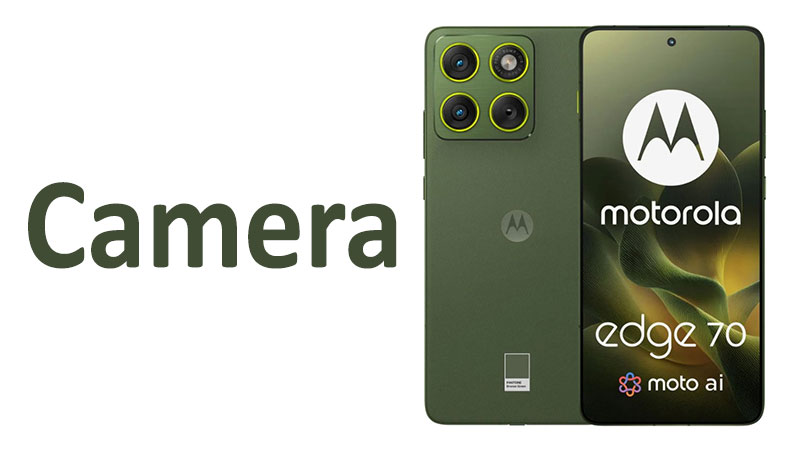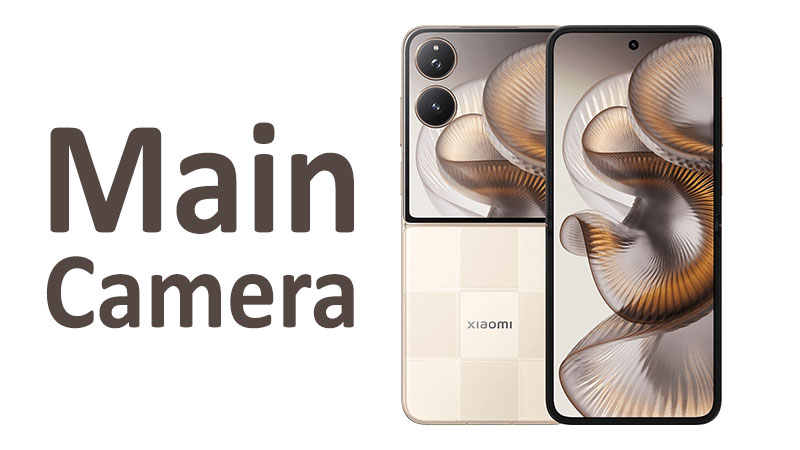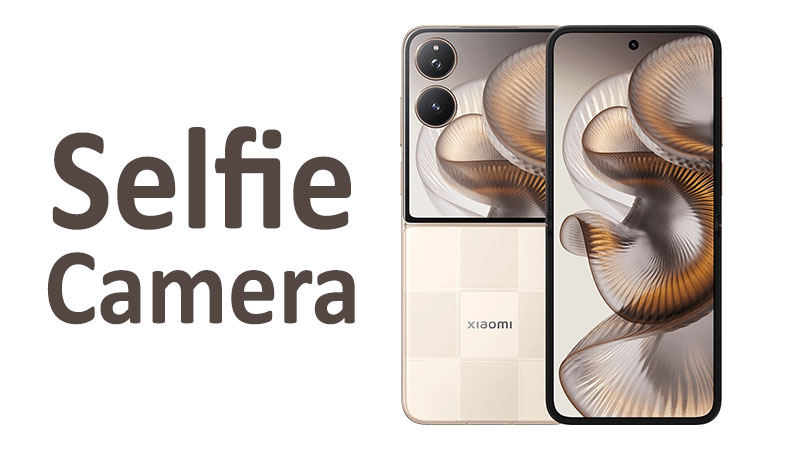The Motorola Edge 70 Camera system demands attention from mobile photography enthusiasts. It represents Motorola’s latest effort to compete in the flagship space. This comprehensive review dives deep into the hardware specifications and real-world performance. We examine the dual 50-megapixel rear setup and its impact on image quality. Our analysis will help prospective buyers understand the device’s true capabilities. It provides a detailed look at still photography, video features, and crucial comparisons.
The Dual 50MP Camera Foundation
The Motorola Edge 70 focuses on photographic utility and consistency. It achieves this using a dual-camera system on the rear. Both the primary wide lens and the ultra-wide lens feature 50-megapixel sensors. This deliberate symmetry is key to the phone’s imaging philosophy. It ensures consistent detail and color across different shooting perspectives. The system relies on advanced sensors and optical stabilization. This combination is designed to deliver reliable performance in diverse conditions.
The overall package is competitive in the high-end market. It emphasizes high resolution and stabilization over an array of different lenses. The camera leverages fast autofocus and efficient software processing. This results in quick, high-quality images ready for sharing. We will analyze the specific technology within each sensor. This reveals how they work together to create the final image.
Main Camera: The 50MP Wide Sensor
The primary camera is the most frequently used lens on any smartphone. Motorola equipped the Edge 70 with a high-performance 50-megapixel wide sensor. This sensor is the engine of the entire camera setup. It balances high resolution with excellent light-gathering ability.
Detailed Main Sensor Specifications
The main lens features a wide f/1.8 aperture. This aperture is relatively large. It allows ample light to reach the sensor quickly. The lens uses a 24mm equivalent focal length. This provides a natural and versatile perspective for everyday shots. The sensor measures 1/1.56 inches in size. Individual pixels are 1.0 micrometers (µm). This size is significant for light sensitivity. It particularly benefits performance in challenging low-light environments.
Several crucial technologies are integrated here. It features multi-directional Phase Detection Autofocus, or PDAF. This technology locks focus with exceptional speed and accuracy. Optical Image Stabilization, or OIS, is also included. OIS physically moves the lens element. This movement counters minor hand shakes. As a result, photos are sharper and videos are smoother.
Daylight Performance and Clarity
In bright daylight, the main 50MP sensor shines. It captures images with outstanding clarity. The resolution, which often uses pixel binning, yields detailed 12.5MP photos. Colors are generally vibrant and true-to-life. Motorola’s color science tends toward natural saturation. This avoids the overly processed look seen on some rivals.
The wide dynamic range handles high-contrast scenes effectively. Details are retained in both the brightest and darkest areas. The speed of the multi-directional PDAF is evident here. It ensures focus is acquired almost instantaneously. This makes capturing fleeting moments much easier. The images boast faithful reproduction of fine textures.
Low-Light Capabilities and OIS Value
Low-light photography is a true test for any flagship camera. The Motorola Edge 70 performs strongly in dim settings. The large 1/1.56-inch sensor is very effective at gathering available light. The f/1.8 aperture also plays a critical role. It maximizes the light hitting the sensor.
The integrated OIS becomes indispensable at night. It permits the camera to use longer shutter speeds. This happens without introducing motion blur from hand movement. Consequently, night shots are brighter and cleaner. They show minimal noise. This hardware advantage reduces the need for aggressive noise reduction software. The system delivers a more natural, less artificial nighttime photo.
Specialized Comparison: OIS vs. EIS Alone
The inclusion of OIS on the main lens is a major advantage. Many mid-range phones rely solely on Electronic Image Stabilization, or EIS. EIS works by digitally cropping and stabilizing the image. OIS is a mechanical system. It prevents motion blur before the image is even captured. This difference is vital for low-light shots. OIS preserves superior detail and clarity. EIS is less effective in extreme darkness. The Edge 70’s OIS system puts it ahead of budget competitors.
Digital Zoom Performance
Since the Motorola Edge 70 does not have a dedicated telephoto lens, digital zoom is necessary. The 50MP main sensor facilitates capable digital magnification. The high resolution captures abundant original data. This provides a good foundation for cropping. The resulting 2x or even 3x digitally zoomed images remain highly usable. They retain acceptable detail for social sharing. However, they naturally lack the clarity of a dedicated optical zoom lens. Advanced computational algorithms intelligently enhance zoomed images.
Ultrawide Camera: Wide Perspectives and Macro
The ultra-wide lens provides a completely different perspective. It is essential for capturing sprawling landscapes or tight indoor scenes. Motorola has equipped the Edge 70 with an excellent 50-megapixel ultra-wide sensor.
Ultrawide Specifications and Function
This secondary sensor is also 50 megapixels. It offers a 120-degree field of view (FoV). This is an extremely wide perspective. The equivalent focal length is 12mm. This makes it perfect for dramatic, sweeping shots. The aperture is f/2.0. The sensor measures 1/2.76 inches. Its pixels are 0.64µm.
The most critical feature here is PDAF. Many competing ultra-wide lenses use fixed focus. The Edge 70’s lens uses Phase Detection Autofocus. This allows the ultra-wide lens to focus rapidly and accurately. It ensures sharpness across the entire wide frame.
Image Quality and Distortion Control
The ultra-wide sensor delivers high-quality images. The images maintain high detail, especially in the center. Motorola has excellent software correction in place. This minimizes the common barrel distortion effect. This effect makes straight lines appear curved near the edges. The Edge 70’s processing keeps lines straight. Color balance is maintained, matching the main camera. This color consistency is a key benefit of the dual 50MP setup.
The Power of Ultrawide PDAF for Macro
The inclusion of PDAF on the ultra-wide is a game-changer. It unlocks a crucial secondary function: macro photography. A fixed-focus ultra-wide cannot focus close enough for effective macro shots. The PDAF allows the Edge 70 to focus extremely close to subjects. This captures intricate details of small objects. It turns the ultra-wide lens into a true two-in-one utility tool. This capability is a significant selling point for creative users.
Specialized Comparison: Ultrawide Autofocus vs. Fixed Focus
Most flagship competitors use a fixed-focus ultra-wide lens. This limits their close-up capabilities. The Motorola Edge 70, with its PDAF ultra-wide, offers superior flexibility. It eliminates the need for a separate, often low-resolution, macro lens. The 50MP resolution guarantees much higher detail in macro shots. This is a clear technical advantage in the ultra-wide category.
Dedicated Video Recording Features
The Motorola Edge 70 is a strong contender for mobile videographers. It offers a solid combination of high resolution and advanced stabilization. This ensures smooth, high-quality video capture.
4K and High Frame Rate Options
The rear cameras support 4K video recording at 30 frames per second (fps). While some rivals offer 4K at 60fps, 4K 30fps is highly cinematic. It is perfectly adequate for most users and platforms. The phone also supports high-speed 1080p recording. It can capture 1080p video at 30, 60, 120, and even 240fps. The 120fps and 240fps modes are perfect for slow-motion effects. They allow detailed analysis of fast-moving subjects.
Gyro-EIS Stabilization
Video stability is managed primarily by gyro-EIS. This Electronic Image Stabilization system is highly effective. It uses the phone’s gyroscope data to detect movement. Then, it digitally adjusts the video frame-by-frame. This results in incredibly smooth and steady footage. Gyro-EIS works across all video modes. Combined with OIS on the main lens, stability is excellent. The dual system provides rock-solid recording. It handles walking, panning, and slight hand tremors with ease.
Specialized Comparison: 4K 30fps vs. 4K 60fps
The limitation to 4K 30fps is worth noting. Competitors often offer 4K 60fps. This provides smoother action for high-speed content. The Edge 70’s 4K 30fps is sufficient for cinematic quality. However, users prioritizing the highest frame rate should consider this constraint. For most content creators, 4K 30fps offers a balance of quality and file size. It is a standard for many professional video applications.
1080p Slow-Motion Performance
The 1080p 240fps slow-motion is a key feature. It captures incredibly detailed slow-motion video. This is useful for sports and artistic effects. The quality at this frame rate is excellent. It outperforms many mid-range phones. They often offer lower-resolution slow-motion modes.
Front-Facing 50MP Selfie Camera
Motorola made a bold choice for the front-facing camera. They equipped it with a high-resolution 50-megapixel sensor. This is a significant step up from standard 12MP or 32MP modules. This high-resolution focus extends the Edge 70’s commitment to detail.
Selfie Camera Specifications and Detail
The front sensor is 50 megapixels. It features an f/2.0 aperture. The pixel size is 0.64µm. The focal length is classified as wide. It offers a broad perspective for capturing group selfies. The high megapixel count ensures images are rich in detail. This is beneficial for subsequent cropping or editing.
The selfie camera supports HDR. This helps balance exposures in backlit scenes. It prevents the subject from becoming too dark against a bright background. Still image quality is superb. It focuses on sharp features and natural skin tones.
Selfie Video Capabilities
The front camera supports 4K video recording at 30fps. This is excellent for high-quality vlogging. Many competitors limit front-facing 4K to 30fps. This provides a high-resolution option for professional mobile content creation. It also records 1080p video at 30fps and 120fps. The 120fps option allows for front-facing slow-motion. The video benefits from the strong gyro-EIS. This ensures vlogs remain steady and watchable.
Specialized Comparison: 50MP Selfie vs. Standard
Most competing phones use 12MP or 32MP selfie sensors. The 50MP resolution of the Edge 70 is a significant advantage. This higher resolution translates directly into more detail. It provides greater flexibility for editing. Users can crop their selfies significantly without losing overall quality. This is particularly useful for printing or professional headshots. The resulting images are cleaner and sharper.
Computational Photography and Features
The hardware is only part of the story. Motorola’s computational engine processes the data. This enhances the images and unlocks creative features. The software is designed for simplicity and speed.
HDR and Panorama Implementation
High Dynamic Range, or HDR, is a key software feature. It combines multiple shots taken at different exposures. This process creates one balanced image. The Edge 70 implements HDR effectively. It maintains a natural look without exaggeration. Bright highlights are pulled back. Details are revealed in deep shadows. The panorama mode also performs seamlessly. It stitches together wide scenes accurately.
Software Optimization and Features
Motorola utilizes its software platform for image optimization. This includes features like “Shot Optimization.” The camera intelligently recognizes scenes. It adjusts settings like exposure and color in real-time. This ensures optimal results with minimal user input. The processing tends to deliver images that are vibrant but not overly artificial. This balance is appealing to a wide user base.
Autofocus Technology Deep Dive
Both rear sensors feature multi-directional PDAF. This is an advanced form of autofocus. It uses tiny phase-detecting photodiodes across the sensor. These diodes measure phase differences between incoming light rays. This allows the camera to instantly calculate the necessary lens movement. The speed and accuracy are far superior to older contrast-detection systems. This technology ensures consistently sharp images in all conditions.
Overall Pros and Cons for the Edge 70 Camera
Any camera system has distinct strengths and weaknesses. A balanced overview helps consumers make the right choice. The Motorola Edge 70 offers several clear advantages. However, it also has a few limitations.
Key Strengths (Pros)
The camera boasts a versatile dual 50-megapixel rear setup. This ensures consistent detail across wide and ultra-wide shots. The primary lens includes OIS. This provides superior stabilization for both photos and videos. The ultra-wide lens features PDAF. This is crucial for excellent macro and general autofocus capability. The front camera is a high-resolution 50-megapixel unit. It offers detailed selfies and 4K video recording. Video stability is excellent. It benefits from the robust gyro-EIS system. The main f/1.8 aperture performs very well in low-light environments.
Potential Weaknesses (Cons)
The maximum optical zoom is only 1x. The phone lacks a dedicated telephoto lens. This means relying entirely on digital zoom for distant subjects. The 4K video recording is limited to 30fps. Many competitors now offer 4K 60fps for smoother action capture. The selfie camera does not include OIS. It relies solely on electronic stabilization for video. The smaller pixel size on the ultra-wide sensor can sometimes struggle with extreme low light compared to the main sensor.
Important Considerations for Buyers and Readers
Understanding the Motorola Edge 70’s camera philosophy is key. The device appeals to specific user needs. Buyers should evaluate the trade-offs against their personal shooting habits.
Focusing on Consistency and Utility
Motorola clearly prioritized sensor consistency. The dual 50MP rear system guarantees quality across perspectives. This setup is highly practical for most users. It provides excellent ultra-wide functionality. The inclusion of PDAF on that ultra-wide sensor is a major utility gain. It makes the phone great for macro enthusiasts. This versatility is a deliberate design choice.
The Zoom Constraint
The lack of a dedicated optical telephoto lens is the main constraint. Users who frequently photograph distant subjects should consider this. The Edge 70 relies on digital cropping. While good, digital zoom is always inferior to true optical magnification. If a 3x or 5x optical zoom is essential, this phone may not be the best choice. For the average user, however, the digital zoom is generally adequate.
Vlogging and Selfie Quality
The 50MP selfie camera is a huge selling point. It offers high resolution for detailed vlogging. The 4K 30fps front video is excellent quality. Combined with gyro-EIS, it ensures steady, high-quality front-facing content. This makes the Edge 70 a strong candidate for social media creators. The ample detail provides flexibility for cropping and reframing.
Value of OIS on the Main Lens
The OIS on the main lens is a must-have feature. It contributes significantly to overall image sharpness. It is particularly important for capturing photos in dimly lit restaurants or indoors. This hardware stabilization provides superior results. It reduces motion blur and enhances image quality dramatically.
Conclusion
The Motorola Edge 70 Camera delivers a highly capable and balanced imaging experience. Its strength lies in the dual 50-megapixel symmetrical system. This ensures superb consistency and detail across the wide and ultra-wide ranges. The main lens, with its f/1.8 aperture and OIS, excels in low-light conditions. The ultra-wide lens is exceptionally versatile. It gains huge utility from the inclusion of PDAF for macro photography.
The camera provides high-quality 4K video at 30fps. It uses excellent gyro-EIS stabilization for smooth footage. The 50MP selfie camera is also a standout feature. It offers impressive detail and high-resolution video for vlogging. While it lacks a dedicated optical telephoto lens, the overall package is strong. The Edge 70 is an excellent choice for users prioritizing consistency, low-light performance, and ultra-wide utility. It represents a formidable competitor in the modern flagship market.
Frequently Asked Questions (FAQ)
1. Does the Motorola Edge 70 have a dedicated telephoto lens?
No, the Motorola Edge 70 does not feature a dedicated telephoto lens. It relies on digital zoom from the 50MP main sensor.
2. What is the highest video frame rate supported by the rear camera?
The rear camera supports 4K video at 30fps. It can also record 1080p video at a high-speed 240fps for slow-motion effects.
3. Does the main 50MP camera lens have Optical Image Stabilization?
Yes, the primary 50-megapixel wide-angle camera includes hardware-based Optical Image Stabilization (OIS).
4. Why is PDAF on the ultra-wide lens important for the camera?
PDAF allows the ultra-wide lens to focus accurately at close range. This enables it to function effectively as a high-quality, high-resolution macro camera.
5. What resolution does the front-facing selfie camera offer for still photos?
The front-facing camera on the Motorola Edge 70 offers a very high resolution of 50 megapixels for still photos.



